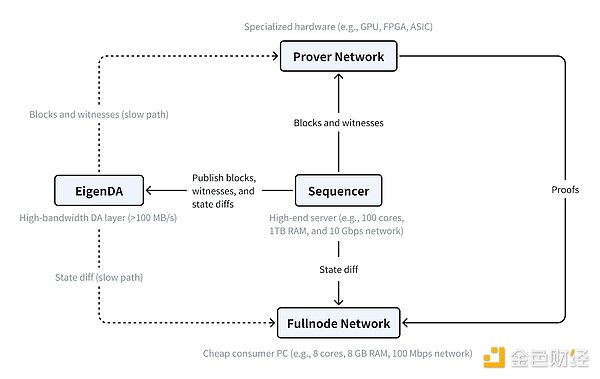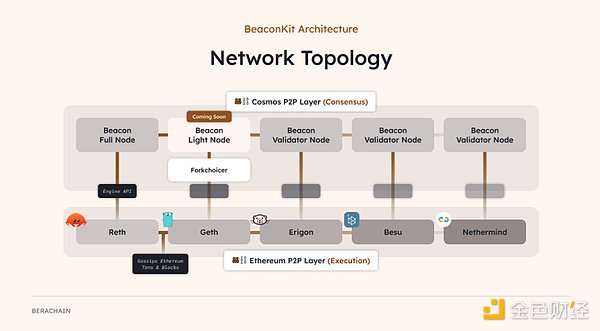Author: Jun, Bankless; Compiler: Deng Tong, Golden Finance
The Ethereum Virtual Machine (EVM) has quietly become the pillar of blockchain development. It’s not just the technology, it’s the ecosystem of developers, tools, and applications that evolve around the technology.
Today, there are many teams that are rethinking Ethereum’s design choices, enhancing the EVM to create a blockchain that can handle billions of users and thousands of transactions per second. They leverage the benefits of EVM and push the boundaries with new architectures and capabilities.
This article highlights projects that are accelerating EVM to achieve massive scalability and pave the way for future cryptocurrency adoption. Today, we’ll take a deep dive into Monad, MegaETH, Berachain, and Sei.
Monad
First, let’s talk about Monad .
Monad is an L1 blockchain that has raised $225 million to enhance EVM by introducing optimistic parallel execution, targeting a throughput of 10,000 transactions per second.
Parallel execution allows independent transactions to run simultaneously, significantly speeding up processing. Think of it like using multiple washing machines at the same time: instead of waiting for each one to finish, everything can be done faster while still appearing organized.

In addition to parallel execution In addition, Monad optimizes the performance of the entire stack:
Through its custom consensus Performance is enhanced by the mechanism MonadBFT, which enables single-slot finalization for faster transactions.
Adopt delayed execution to separate processing from consensus, improving efficiency and block time.
Its parallelized custom database, MonadDB, allows asynchronous state access for faster data processing.
Notably, Monad’s architecture is optimized for consumer-grade hardware, making decentralization easier without the need for expensive validator setups.
MegaETH
Next is MegaETH.
MegaETH is Ethereum L2 that takes Ethereum’s security to new levels of performance. Its goal is audacious: build the first real-time blockchain capable of processing 100,000 transactions per second, while relying on Ethereum and EigenDA to ensure security and data availability.
The key to MegaETH throughput is specialization. Most blockchains have each node perform the same tasks—validation, consensus, and transaction execution. MegaETH changes this through role division.
Nodes are divided into three types: sequencer, prover and full node. The sequencer handles transaction ordering and execution. Full nodes simply receive status updates to keep their local copy of the chain up to date. The prover works in the background, verifying everything with cryptographic proofs.

The main components of MegaETH and their interactions. Source: MegaETH Research
MegaETH also enhances EVM with in-memory computing, where the sequencer holds the entire EVM world state in memory. This speeds up state access up to 1,000 times compared to traditional systems. Additionally, improvements to the block building algorithm and other updates allow MegaETH to address issues such as latency and throughput.
Berachain
Of course, we have to talk about Berachain.
Berachain is a high-performance, EVM-identical L1 blockchain, which means that its execution layer mirrors the Ethereum mainnet’s EVM runtime environment. This results in a system that supports all the familiar tools and operations known to developers, but with additional advantages.
At the core of these advantages is BeaconKit, a modular, EVM-centric consensus client framework on which Berachain is built. The main benefit of BeaconKit is the ability to integrate the functionality of the CometBFT consensus algorithm with the EVM execution environment. This effectively modularizes the stack, separating the consensus and execution layers to enhance the overall Berachain experience.

Source: BeaconKit - a modular framework for building EVM consensus clients
BeaconKit can also be used with any EVM Perform client pairing, allowing every upgrade to the EVM (such as Dencun) to be automatically applied to Berachain. This means that Berachain not only retains the same state as the EVM, but also speeds it up, extends it, and increases composability without losing compatibility. For example, with BeaconKit, Berachin can achieve single-slot finalization, meaning blocks are finalized immediately instead of waiting 12-15 minutes or more like on Ethereum.
Sei
Finally, let’s take a deeper look at Sei.
Sei combines an EVM environment with parallel execution to enable faster and cheaper transactions while leveraging existing tools and developer communities. Its parallel execution allows multiple transactions to occur simultaneously, significantly increasing throughput, and is complemented by SeiDB for fast status updates.

Sei's novel Its "Twin Turbo" consensus mechanism can speed up the block time to only 400 milliseconds. It achieves this goal through two key technologies that eliminate common inefficiencies in consensus protocols:
Smart block propagation - speeds up block creation, reduces validator wait time, and ultimately reduces latency.
Optimistic Block Processing - Validators start processing transactions immediately after receiving a block proposal, thus speeding up finalization.
In addition, Sei incorporates features such as interoperability between EVM and CosmWasm, opening the door to the Cosmos ecosystem.
However, Sei does sacrifice some decentralization between nodes, as these features introduce quadratic communication complexity. This means that as more validators join, the number of messages increases significantly, making network scaling more difficult.
Conclusion
These ambitious projects aim to build on Ethereum’s achievements and scale throughput to thousands of transactions per second. Most are still in the early stages; three of the four have yet to launch on mainnet. Only time will tell how successful they are in scaling, driving adoption, and enabling efficient application development.
What does this mean for Ethereum?
The silver lining is that some of these high-performance chains are L2 chains, in line with Ethereum’s rollup-centric scaling roadmap. Another positive aspect is that they are all EMV compliant, building on existing tools while enhancing them in unique ways to facilitate EVM adoption.
This is also a critical moment for the Ethereum community, as many are questioning why more focus is not being placed on scaling Ethereum itself to L1. Vitalik seems to be in “wartime mode,” constantly publishing blog posts about Ethereum’s potential future. The takeaway is that Ethereum has multiple paths to scaling Ethereum L1 throughput, and importantly, all are being discussed and explored.

 Jixu
Jixu








